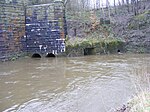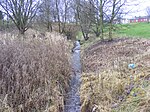Holy Family Roman Catholic and Church of England College
Catholic secondary schools in the Diocese of SalfordChurch of England secondary schools in the Diocese of ManchesterGreater Manchester school stubsHeywood, Greater ManchesterSecondary schools in the Metropolitan Borough of Rochdale ... and 2 more
Use British English from February 2023Voluntary aided schools in England
Holy Family RC & CE College (formerly St Joseph's RC High School) is a coeducational secondary school located in Heywood in the English county of Greater Manchester.It is a voluntary aided school administered by Rochdale Metropolitan Borough Council, the Roman Catholic Diocese of Salford and the Church of England Diocese of Manchester. It was previously known as St Joseph's RC High School serving the Catholic population of the local area, however it became a joint-faith Catholic/Church of England school in 2007 and was renamed Holy Family RC & CE College.Holy Family RC & CE College offers GCSEs and BTECs as programmes of study for pupils.
Excerpt from the Wikipedia article Holy Family Roman Catholic and Church of England College (License: CC BY-SA 3.0, Authors).Holy Family Roman Catholic and Church of England College
Dorchester Grove,
Geographical coordinates (GPS) Address Phone number Website External links Nearby Places Show on map
Geographical coordinates (GPS)
| Latitude | Longitude |
|---|---|
| N 53.58646 ° | E -2.22253 ° |
Address
Holy Family Roman Catholic and Church of England College
Dorchester Grove
OL10 2AA , Siddal Moor
England, United Kingdom
Open on Google Maps







